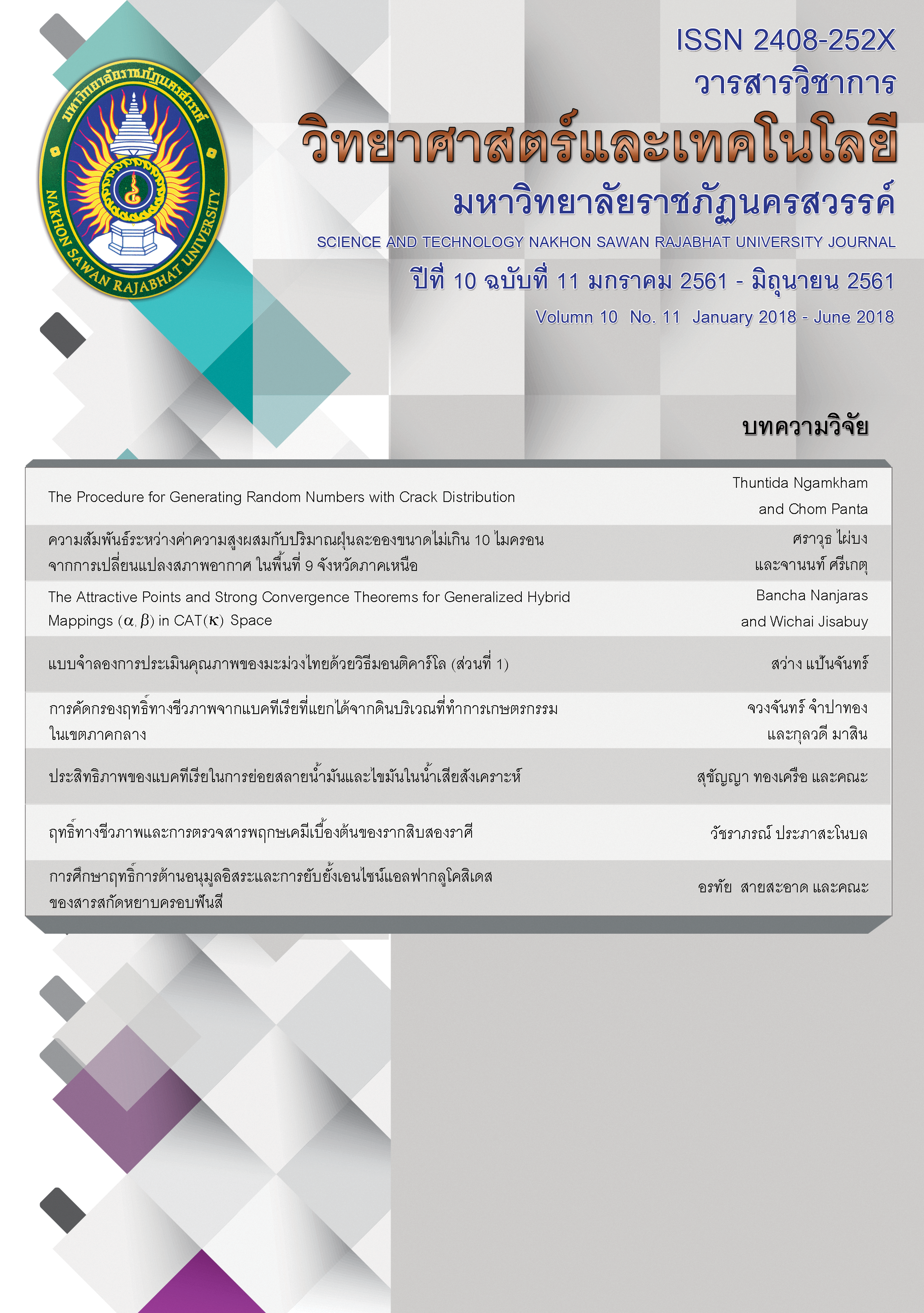แบบจำลองการประเมินคุณภาพของมะม่วงไทยด้วยวิธีมอนติคาร์โล (ส่วนที่ 1)
Main Article Content
Abstract
Mango is considered as one of the Thailand’s major exporting fruits, achieving its massive export volume in foreign markets with different levels of purchasing power. Thailand is reportedly ranked the third for the world’s largest mango exporter. Also, there are many factors that decrease the competitiveness of the Thai mango including lack of production consistency, inferior production management, excessive production cost, and the soaring selling prices. In consequence, a large number of consumers decided to purchase mangoes from other business competitors. Admittedly, significant factors that influence the consumer’s buying decision are the information of product quality, reasonable price, desirable taste and appearance. In order to solve the mentioned problems, it is necessary to study the quality assessment of Thai Mangoes related to the entire supply chain management from upstream to downstream. According to the study, the quality assessment of Thai Mangoes using Monte Carlo Simulation at the temperature of 13 oC throughout every stage of the storage, from harvesting to distributing the mangoes to the consumers, assure the quality level of the mangoes which benefits for the business decision making process or the quality management of Thai Mangoes. There are three significant factors that influence the quality level comprising total soluble solid, titratable acidity, and firmness. However, the quality level can be divided into four levels which are unripe, half-ripe, ripe and over-ripe. So, the data were modeled the quality index assessment of Thai Mangoes at the temperature of 13 oC, during storage time from 1-45 days with maximum likelihood estimation and statistical test. The result showed that the model had mean square error at 0.6876 ± 0.0449 and coefficient of determination (R2) is 0.8881 ± 0.0076 show that the model of quality index assessment is appropriate and corresponds to the actual data at an acceptable level.
Article Details
References
2.สำนักงานเศรษฐกิจการเกษตร. (2556). ข้อมูลพื้นฐานเศรษฐกิจการเกษตร ประจำปี พ.ศ. 2556. ศูนย์สารสนเทศการเกษตร, กรมส่งเสริมการเกษตร, กรุงเทพฯ.
3.Crisosto, C.H. (1994). Stone fruit maturity indices: A descriptive review. Postharvest News and Information. 5: 65-68.
4.Hammersley, J.M. and D.C. Handscomb. (1964). Monte Carlo Methods. Wiley, New York.
5.Mahayothee, B., S. Neidhart, R. Carle and W. Muhlbauer. (2007). Effects of variety, ripening condition and ripening stage on the quality of sulphite-free dried mango slices. European Food Research and Technology. 225(5): 723-732.
6.Mahayothee B, Muhlbauer W, Neidhart S and Carle R. (2004). Influence of postharvest ripening process on appropriate maturity drying mangoes 'Nam Dokmai' and ‘Kaew’. Acta Horticulturae. 645: 241-248.
7.Prange, R.K., Kalt, W., Daniels-Lake, B., Liew, C.L., Page, R.T., Walsh, J.R., Dean, P., Coffin, R. (1998). Using ethylene as a sprout control agent in stored ‘Russet Burbank’ potatoes. Journal of the American Society for Horticultural Science. 123: 463–469.
8.Rungpichayapichet, P., B. Mahayothee, M. Nagle, P. Khuwijitjaru and J. Muller. (2016). Robust NIRS models for non-destructive prediction of postharvest fruit ripeness and quality in mango. Postharvest Biology and Technology. 111: 31-40.
9.Vásquez-Caicedo, A.L., P. Sruamsiri, R. Carle and S. Neidhart. (2005). Accumulation of all-trans-β-carotene and its 9-cis and 13-cis stereoisomers during postharvest ripening of nine Thai mango cultivars. Journal of Agricultural and Food Chemistry. 53(12): 4827–4835.

